Appearance Colorless liquid Boiling point 82.2 °C | Formula C4H10O Density 781 kg/m³ | |
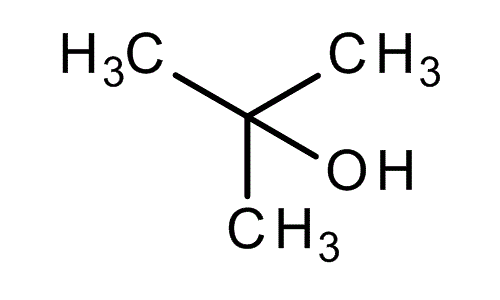 | ||
Related compounds | ||
tert-Butyl alcohol (TBA), also called tert-butanol, is the simplest tertiary alcohol, with a formula of (CH3)3COH (sometimes represented as t-BuOH). It is one of the four isomers of butanol. tert-Butyl alcohol is a colorless solid, which melts near room temperature and has a camphor-like odor. It is miscible with water, ethanol and diethyl ether.
Contents

Natural occurrence
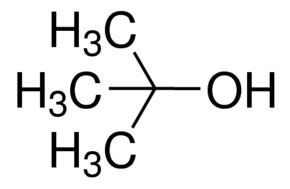
t-Butyl alcohol has been identified in beer and chickpeas. It is also found in cassava which is used as fermentation ingredient in certain alcoholic beverages.
Preparation
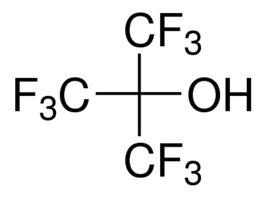
tert-Butyl alcohol is derived commercially from isobutane as a co-product of propylene oxide production. It can also be produced by the catalytic hydration of isobutylene, or by a Grignard reaction between acetone and methylmagnesium chloride.
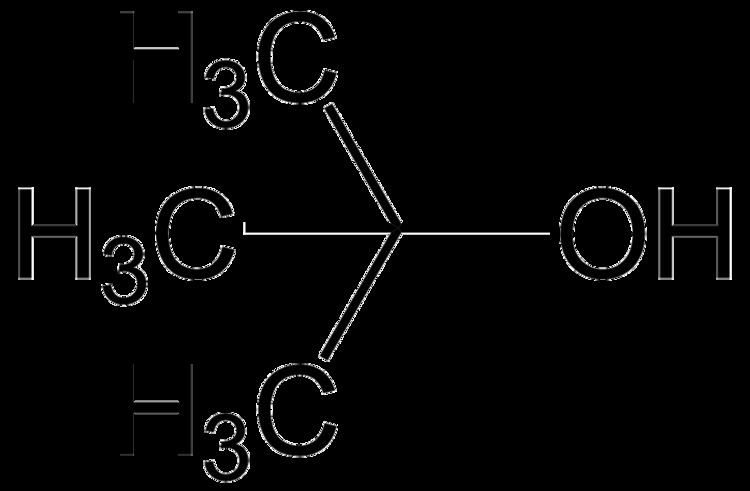
Purification cannot be performed by simple distillation due to formation of an azeotrope with water, although initial drying of the solvent containing large amounts of water is performed by adding benzene to form a tertiary azeotrope and distilling off the water. Smaller amounts of water are removed by drying with CaO, K2CO3, CaSO4, or MgSO4, followed by fractional distillation. Anhydrous t-butanol is obtained by further refluxing and distilling from magnesium activated with iodine, or alkali metals such as sodium or potassium. Other methods include the use of 4A MO sieves, aluminum tert-butylate, CaH2, or fractional crystallization under inert atmosphere.
Applications
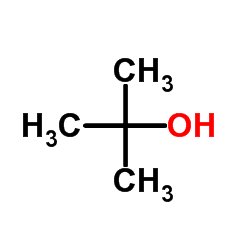
tert-Butyl alcohol is used as a solvent, ethanol denaturant, paint remover ingredient, and gasoline octane booster and oxygenate. It is a chemical intermediate used to produce MTBE and ETBE by reaction with methanol and ethanol, and TBHP by reaction with hydrogen peroxide.
Reactions
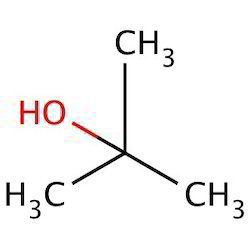
As a tertiary alcohol, tert-butyl alcohol is more resistant to oxidation and less reactive than the other isomers of butanol.
When tert-butyl alcohol is deprotonated with a strong base, the product is an alkoxide anion. In this case, it is tert-butoxide. For example, the commonly used organic reagent potassium tert-butoxide is prepared by refluxing dry tert-butanol with potassium metal.
K + tBuOH → tBuO−K+ + 0.5 H2The tert-butoxide is a strong, non-nucleophilic base in organic chemistry. It readily abstracts acidic protons from substrates, but its steric bulk inhibits the group from participating in nucleophilic substitution, such as in a Williamson ether synthesis or an SN2 reaction.
tert-Butyl alcohol reacts with hydrogen chloride to form tert-butyl chloride.
It also reacts with sodium in liquid ammonia.
